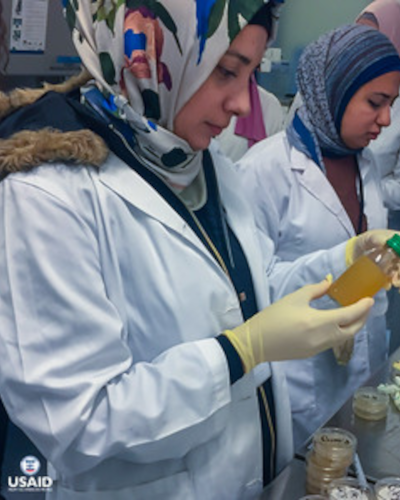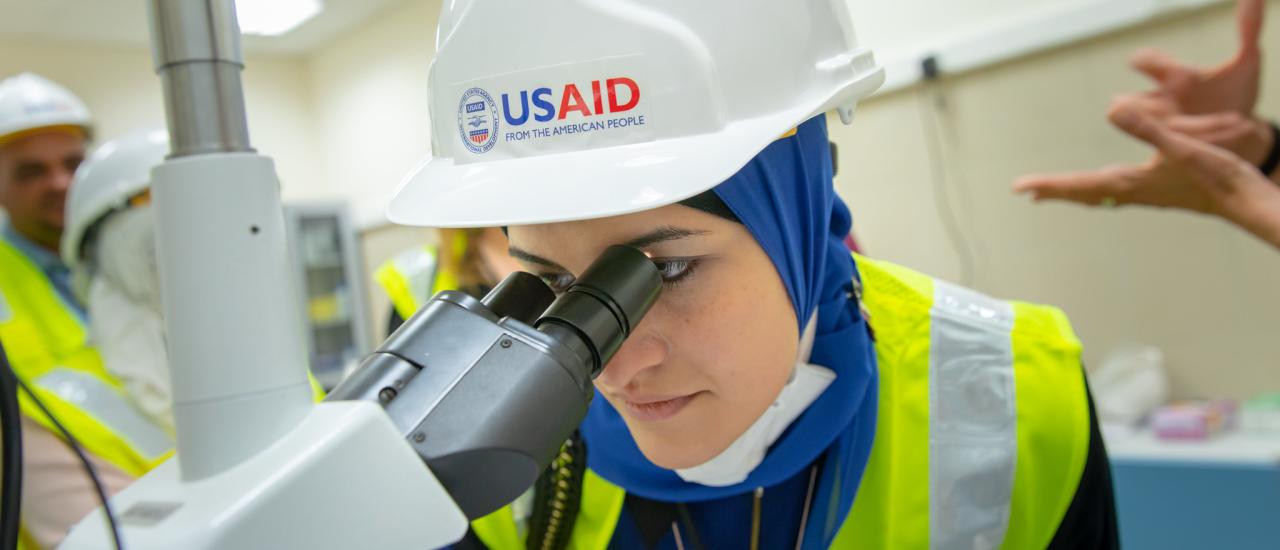Collaborating, Learning, and Adapting for Water Security, Sanitation, and Hygiene
Using Evidence to Drive Action in Support of Water for the World

Collaborating, learning, and adapting (CLA) are critical to effective and efficient water security, sanitation, and hygiene programming and strategy at USAID and among its partner governments, donors, and implementing partners. By looking to the past, present, and future, USAID is seeking to coalesce partners and the sector around approaches that produce lasting results, measure those results in meaningful ways, and ensure that the important feedback loop between learning and adaptation continues.
Collaborating Intentionally
USAID is focusing its development efforts in water and sanitation in the Agency’s Water for the World Act High-Priority Countries (HPCs), strategic priority countries, and aligned operating units. HPCs are partner countries of greatest sector need and opportunity, and where U.S. engagement can best protect our national security interests. Each HPC has a Water for the World Priority Country Plan in place that provides relevant stakeholders with a high-level overview of how USAID will seek to work with development partners, host-country governments, local entrepreneurs, and others to promote sustainable water and sanitation service delivery. While high level, the country plans frame how USAID is collaborating with partners to add value, fill gaps, and avoid duplication of efforts. The plans set measurable targets, apply global learning, and tailor the learning to the local context.
Learning Systematically
USAID invests heavily in learning to support sustainable water and sanitation services. The Agency has bilateral research investments worldwide, as well as centrally funded, global water and sanitation research activities that are directly informing programming approaches and sector strategy. Through a number of approaches and methods, USAID is generating evidence for the sector and taking time to reflect on implementation modalities in light of new findings.
Learning from the Past
Technical Briefs Capture Learning: USAID produced a series of technical briefs that distill key learning and highlight critical considerations for activity design, implementation, and activity monitoring. Each brief puts current practice into context with a discussion of programmatic approaches that have and have not worked in the past, includes concrete examples from the field, and suggests additional resources for further reading. They are intended to be actionable and help both implementing partners and USAID staff better understand how to put the latest evidence into practice in the field based on global knowledge, analytics, and programming.
Ex-Post Evaluations: Through a series of ex-post evaluations, USAID sought to understand the long-term drivers of program outcomes. By returning to six Agency-funded water security, sanitation, and hygiene activities three to 10 years after completion, USAID examined whether and how activity results were sustained, and most critically, what implementation or programmatic approaches proved most durable and why. The results of the ex-post series were sobering. Despite tremendous achievements within the life of the evaluated activities, results have largely not endured. This is especially the case in countries and communities with the highest levels of poverty at baseline.
Previous USAID Programs that contributed to the evidence base.
Learning in the Future
Despite the significant investment in evidence generation USAID has made to-date, many lingering gaps remain. Visit the Action Research Initiative page for more information on how USAID is investing in research to drive evidenced-based action in the WASH sector.
Adapting Approaches
New learning will continue to emerge, and USAID will work hand-in-hand with governments, implementing partners, and donor counterparts to internalize new findings and apply them to maximize sector impact, including by pivoting mid-implementation if needed. USAID continues to enhance monitoring as a key tool to facilitate activity- and project-level adaptation when needed. The Water and Development Indicator Handbook describes all current standard performance indicators and provides guidance on how to measure them for a variety of programmatic approaches.


